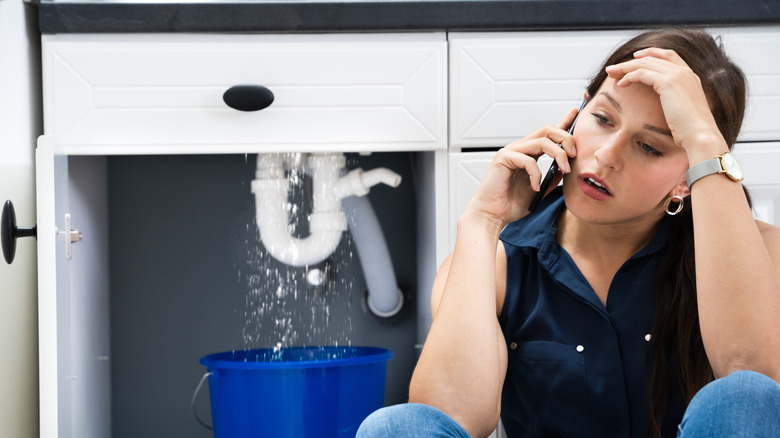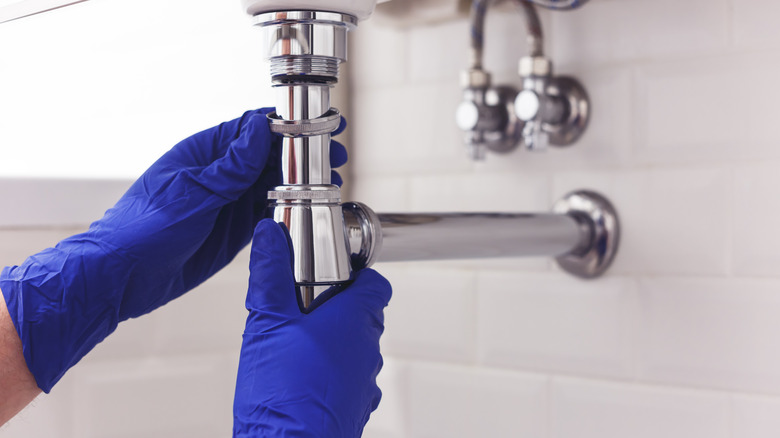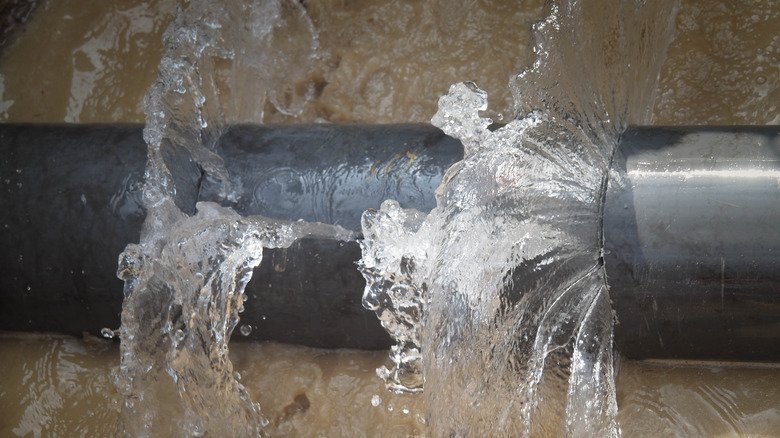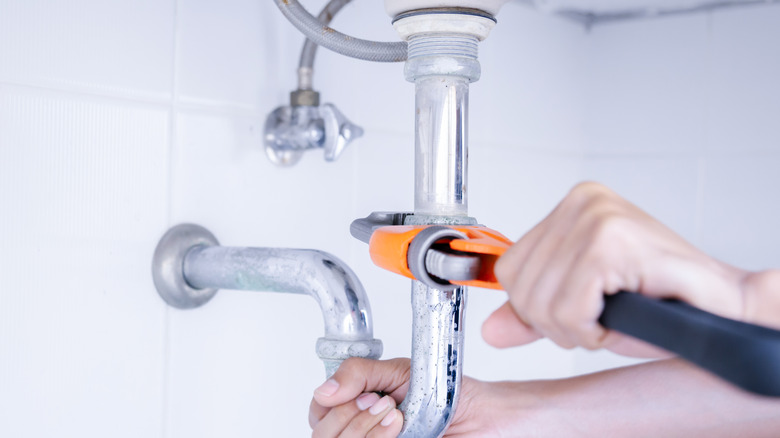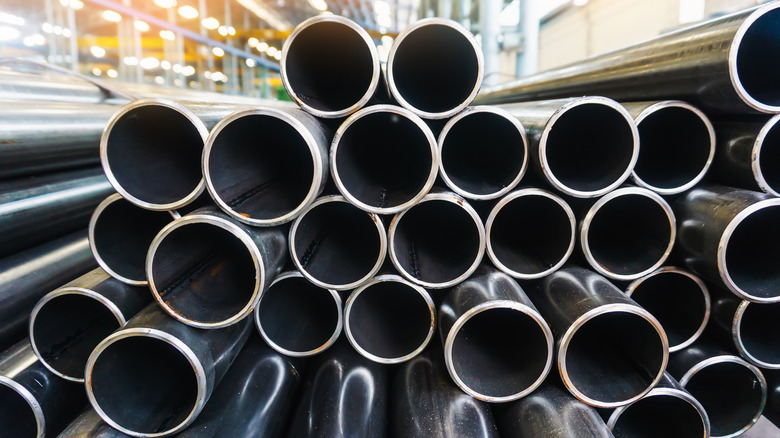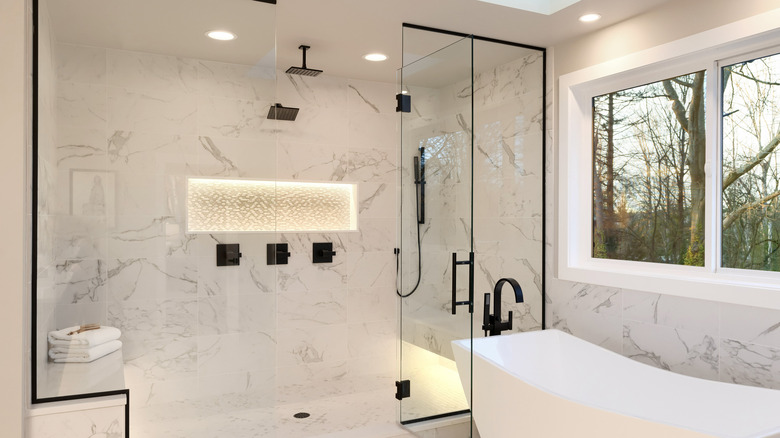5 Common Bathroom Plumbing Mistakes You Shouldn't Make
Homeownership comes with all sorts of responsibilities. If you are used to apartment life, suddenly being in charge of your maintenance can be stressful and expensive, according to Universal Plumbing and Sewer. This is why many homeowners quickly learn to DIY many common fixes around the house. However, when it comes to plumbing, it's not always so simple. The series of pipes that run throughout the typical home can be complicated. With water needed in bathrooms, kitchens, yards, and more, plumbing must work correctly and efficiently.
When it comes to the bathroom specifically, which has various types of plumbing to deal with between the shower, toilet, and sink, things can get complicated. If you're considering doing your own plumbing rather than hiring a professional, it is possible to get simple to more advanced repairs done independently. However, there are costly mistakes that many aspiring plumbers make that only lead to needing a professional afterward. Save yourself money and frustration by being aware of these common mistakes you shouldn't make with bathroom plumbing.
1. Don't forget the P-trap
One of DIYers' most common plumbing mistakes is forgetting the P-trap. The reason? Many of us simply don't know what it is or does. But even if you've entirely repaired and finished dealing with your plumbing issue, once you realize you've forgotten this little piece, you'll want to go back in and replace it. But why?
A P-trap is a U-shaped piece of the drain pipe that always holds a small amount of water. Upon first glance, the P-trap looks like a catcher in case someone accidentally drops something of value down the drain. But in reality, the P-trap actually has a much more critical task — preventing dangerous and bad-smelling gases from leaking into your home. According to Swan Plumbing, Heating & Air of Denver, this is the most crucial task of the P-trap. Without it, your home will begin to smell like sewage and other unpleasant things. It is an essential function of modern plumbing systems.
2. Turn off the water line
What happens when you first start plumbing repairs without turning off the main water line? It is possible that water will spray everywhere and can't easily be stopped, which can lead to flooding and-or water damage to your floors, walls, and belongings. It might sound obvious, but many home repairs result in thousands of dollars of damage to the home simply because DIY plumbers forget to turn off the main water line before starting their project.
You can either shut off your main water supply or use the individual shut-off valves on certain toilets and faucets. According to Home Depot, these individual stops usually have round or oval handles that can be turned clockwise to shut off the water supply to that area. Look for this small knob before busting into those pipes — it will spare you considerable risk of injury or home damage.
3. Properly tighten connections
When an individual doesn't have much experience with plumbing, it can be easy to loosen or tighten components too much. This is especially true with bathroom plumbing; if fixtures are overtightened, they can cause damage. This includes bolts, fittings, and supply tubes. According to Fast Plumbers, excessive pressure on plumbing fixtures can damage the fitting.
The trickiest part about tightening connections is likely the fact that damage isn't always apparent right away. Cracking occurs over time, with the impact appearing in the broken fixture days, weeks, or even months later. This can lead to flooding, and if bolts to your toilet tank or bowl are sabotaged, they can crack the porcelain and cause costly damage, including emergency plumbing services. Remember that bolts and connections don't need much pressure to be fastened correctly. Take it easy with the cranking to protect your fixtures.
4. Avoid galvanized pipes
Not all plumbing mistakes have to do with repairs. If you are remodeling your bathroom, some errors can be made in the plumbing right away that can be costly later on down the road. Avoid galvanized pipes if you are selecting tubes for a new sink, toilet, or tub. According to Rood Inc., every type of pipe has different characteristics that can be beneficial or detrimental to a plumbing job; however, galvanized pipe is straight-up problematic.
This type of piping is notorious for rusting and can corrode pipes and fixtures from the inside. This is why it's important to work with your contractor to select a type of pipe more conducive to the task it will be regularly doing. A popular option is copper piping. These pipes are safe to use and able to expand during daily use and weather changes. Plus, exposed copper piping is nice on the eyes and won't clash with any design.
5. Install shower heads correctly
Replacing a shower head honestly sounds like one of the simplest plumbing fixes possible in a bathroom, old or new. However, it's much more tricky than it seems. First and foremost, ensure the shower head you purchase is compatible with your pipes. Custom showers often have different pipe designs and directions than the run-of-the-mill options, and you'll also want to decide if you want a fixed head or a hose attachment. This can get complicated if you buy a showerhead purely because of appearance and do not consider such issues.
According to Mesa Plumbing, Heating and Cooling, you'll also want to clean the shower arm threads before installing them. You'll likely find old tape, residue, and corrosion. By cleaning those threads before installing the new head, you will get the best seal possible and avoid leaks and other complications. Finally, make sure it's seated securely. If the head is screwed on too loosely, you will likely have leaks and other issues that can cause money and wastewater.
